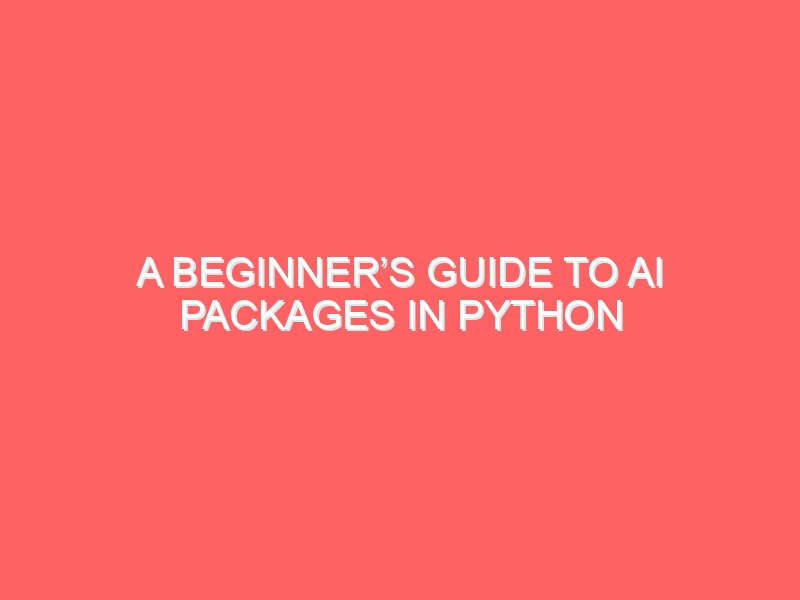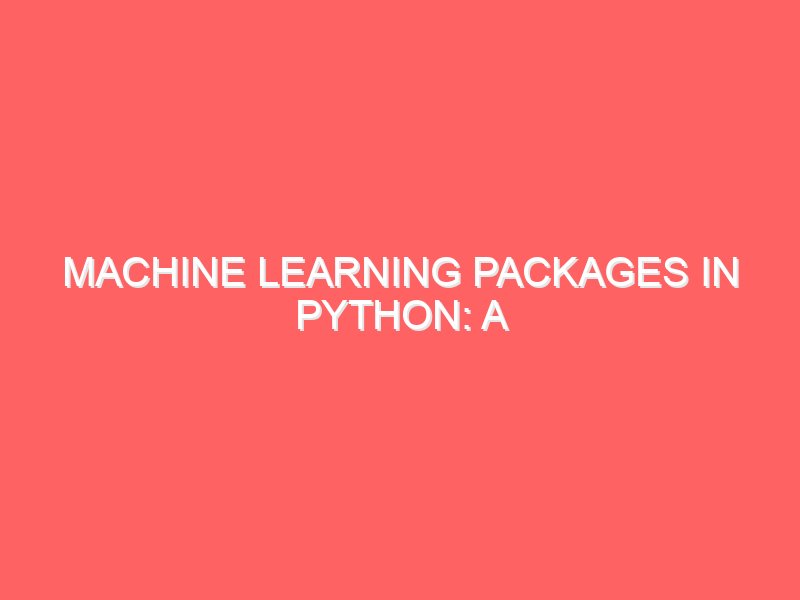Deep Learning: Revolutionizing AI and Data Science
Introduction to Deep Learning Deep learning is a transformative subset of artificial intelligence (AI) that has garnered significant attention due to its remarkable capabilities. Distinct from traditional machine learning approaches, deep learning utilizes layered architectures known as neural networks to model complex patterns and relationships within data. This innovative structure allows for the automatic extraction of features, enabling models to learn directly from raw data, such as images, texts, or audio, without the need for handcrafted features. The significance of deep learning lies in its competence to handle vast amounts of data, which is a prerequisite in today’s data-driven world. Traditional machine learning methods often rely on limited data and simplified models that may not capture intricate relationships. In comparison, deep learning excels in processing massive datasets, often comprised of millions of data points, which allows it to produce state-of-the-art results in various applications, including computer vision, natural language processing, and speech recognition. At the heart of deep learning are neural networks, which consist of interconnected layers of nodes or neurons. Each neuron takes inputs, applies a mathematical transformation, and passes the output to subsequent neurons. This layered design facilitates the learning of hierarchical representations, wherein higher layers recognize increasingly abstract features. As deep learning architectures evolve, more complex structures like convolutional neural networks (CNNs) and recurrent neural networks (RNNs) have been developed, further enhancing performance in specific domains. Overall, the advent of deep learning is revolutionizing AI and data science, driving advancements in diverse fields such as healthcare, finance, and autonomous systems. By automating feature extraction and improving prediction accuracy, deep learning continues to reshape our understanding of AI, leading to unprecedented possibilities and applications that were previously deemed unattainable. The Evolution of Deep Learning Deep learning, a subset of artificial intelligence (AI), has transformed the landscape of data science over several decades. Its roots can be traced back to the 1940s, with the pioneering work on neural networks that laid the foundation for this revolutionary approach. Early researchers, including Warren McCulloch and Walter Pitts, introduced the concept of artificial neurons, enabling computers to emulate basic cognitive functions. Despite initial excitement, progress was slow due to limited computational resources and a lack of extensive datasets. The 1980s marked a significant turning point with the advent of backpropagation, an algorithm that dramatically improved the training of multi-layer neural networks. This innovation reignited interest in neural networks, allowing researchers to develop deeper architectures that could learn more complex representations. However, it wasn’t until the 21st century that deep learning began to gain widespread acceptance. Advances in hardware, particularly graphical processing units (GPUs), empowered practitioners to train larger models more efficiently than ever before. The flood of data generated by the internet and various digital technologies also propelled deep learning into the spotlight. Large-scale datasets became increasingly available, enabling researchers to train their models on a variety of tasks, from image recognition to natural language processing. Prominent deep learning frameworks, such as TensorFlow and PyTorch, emerged during this period, providing accessible tools for practitioners to build and deploy sophisticated models with ease. Milestones such as the success of convolutional neural networks in image classification during the ImageNet competition in 2012 showcased the potential of deep learning technologies and led to their adoption across multiple sectors. As the field continues to evolve, innovative algorithms and architectures, such as transformers and generative adversarial networks (GANs), are further expanding the capabilities of deep learning in AI and data science. Architecture of Deep Learning Models Deep learning, as an integral component of artificial intelligence (AI) and data science, encompasses a variety of architectures that play pivotal roles in processing and understanding complex data. Among these, Convolutional Neural Networks (CNNs), Recurrent Neural Networks (RNNs), and Generative Adversarial Networks (GANs) stand out due to their unique structures and capabilities. Convolutional Neural Networks are predominantly utilized in image recognition and processing tasks. The architecture of CNNs is characterized by convolutional layers that automatically extract features from input images, significantly reducing the need for manual feature engineering. By combining multiple layers of convolutions, pooling, and activation functions, CNNs can learn hierarchical representations of data efficiently. Their efficacy is evident in applications ranging from facial recognition systems to autonomous vehicles, where real-time data interpretation is essential. On the other hand, Recurrent Neural Networks are specially designed for processing sequential data, making them crucial in areas such as natural language processing and time-series prediction. The architecture of RNNs includes loops that enable information to persist, thereby allowing the model to utilize previous inputs for current predictions. This recurrent structure is particularly advantageous when analyzing linguistic structures or historical data, but it does face challenges like the vanishing gradient problem that can hinder learning over long sequences. Generative Adversarial Networks introduce a different paradigm by pitting two neural networks against each other: a generator and a discriminator. The generator creates data instances while the discriminator evaluates them, effectively fostering a competitive environment that enhances the generation of realistic outputs. This architecture is transformative in fields such as image generation and enhances the creative possibilities within deep learning. However, training GANs can be complex, often requiring careful management to ensure stability and convergence. Each of these architectures contributes uniquely to the efficiency and effectiveness of AI solutions, driving forward the capabilities of data science in diverse applications. Understanding their fundamentals is crucial for leveraging deep learning to its fullest potential. Applications of Deep Learning Deep learning has emerged as a powerful tool that is revolutionizing AI and data science across a multitude of domains. Its applications span various sectors, showcasing how its advanced algorithms can process and analyze vast amounts of data to generate valuable insights and drive innovation. One significant area of deep learning application is natural language processing (NLP). NLP leverages deep learning techniques to understand and generate human language. For instance, chatbots and virtual assistants employ deep learning models to accurately interpret user queries and provide relevant responses, enhancing customer service experiences. Furthermore, sentiment analysis tools utilize deep learning to
Deep Learning: Revolutionizing AI and Data Science Read More »



